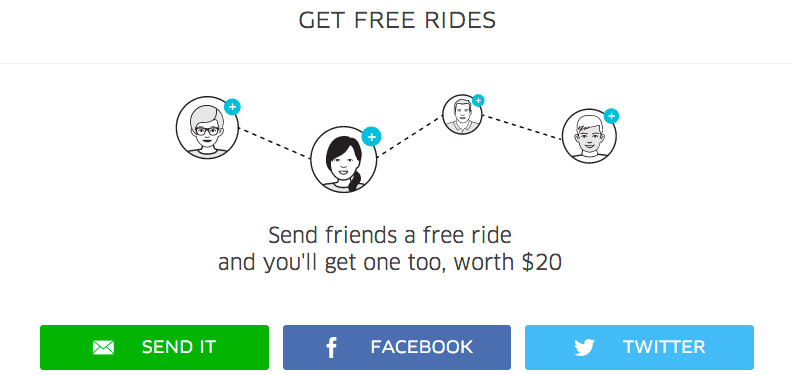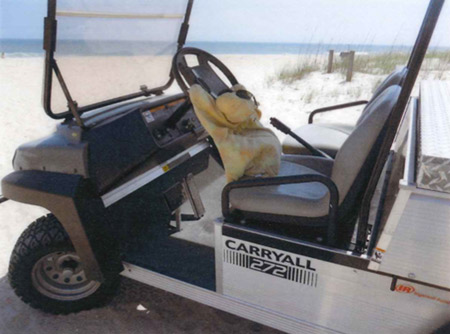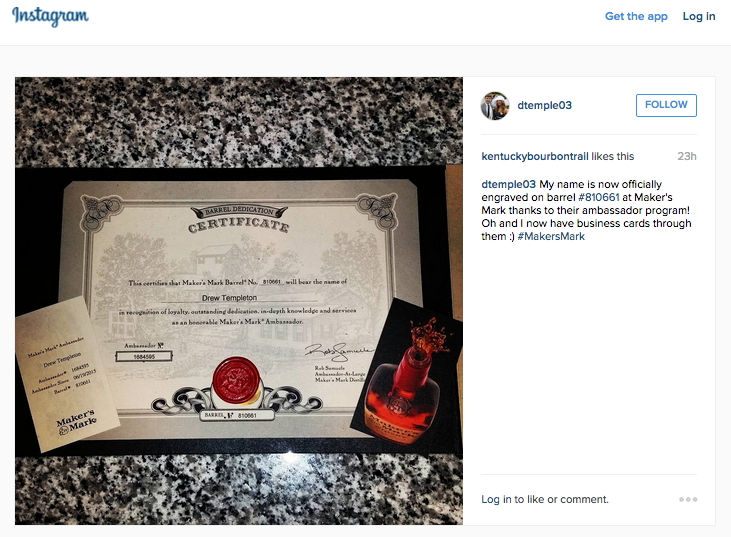Once you’ve launched your product and have some users, it’s time to focus on growth. Here are our top four strategies for achieving growth by creating customer evangelists.
Making your customers so happy that they become evangelists isn’t easy. But it’s definitely worth the effort.
After all, Nielsen reports that 92% of people trust word-of-mouth marketing and recommendations from their friends and family above all other types of advertising. (And that’s up 18% from 2007, which tells us consumers are only trusting these opinions more as time goes on.)
Customer evangelism is an effective way to reach new users for your product or service. It’s also free in most cases. This combination of factors should make it an important component of your company’s overall growth strategy.
Loyal Customers vs Customer Evangelists
First, let’s define what a customer evangelist is. Most businesses have loyal customers or customers who regularly use or buy their products. However, a customer evangelist goes one step beyond a loyal customer.
Not only are customer evangelists repeat customers, they are also believers in your brand or service.

As Jackie Huba and Ben McConnell explain in Creating Customer Evangelists: How Loyal Customers Become a Volunteer Sales Force, these customers “passionately recommend you to their friends, neighbors, and colleagues.”
They also give you voluntary praise or critiques, allow the occasional mistake or drop in quality, and “feel connected to something bigger than themselves,” (i.e. your company’s community).
You should make creating customer evangelists a priority for your business. Here are four strategies for how to do so.
Strategy #1: Talk (and Listen to) Your Customers
When you look at companies with really devoted customers, you’ll see a common trend. They’re always interacting with those customers.
Case Study: Intercom
Take Intercom. This SaaS startup — which just raised $35 million in Series C funding — has built an enthusiastic user base by being super receptive to feedback.
Co-founder Des Traynor estimates that he spends 20-25% of his time “learning who (customers) are, what their product does, where they are based, how often they use Intercom, how they found us, what they love, where they want to see improvements, etc.”
In addition, Intercom recommends having (at least) one employee whose job is “to know exactly what’s going with all types of customers.”
Communicating with your customers turns them into evangelists in four ways:
- They trust you more, which naturally makes them more enthusiastic about your company.
- Their product experience improves, which also boosts their enthusiasm.
- You learn about small problems and flaws before they become big issues. This allows you to make all of your customers happier.
- They give you ideas you might not have developed yourself, resulting in a stronger product or service.
How to Implement This Strategy
To increase the quality and frequency of your customer interactions, try:
- Making the “Contact Us” button on your site easy to find.
- Providing multiple methods of reaching you (by phone, over chat, by email, on social media, etc.)
- Having a dedicated Twitter account for customer support.
- Interacting with your customers when they mention you on social media.
- Asking customers to take surveys.
- Conducting focus groups.
Strategy #2: Surprise and Delight Your Customers
Most transactions look like this:
Customer purchases good or service. → Business provides good or service.
So when your business not only provides what the customer paid for but goes above and beyond, you’ll likely transform a happy-but-normal person into a customer evangelist.
Bonus: They’ll probably want to show off how well they were treated by mentioning it to their friends and family or even sharing the news on social platforms.
Case Study: Ritz-Carlton
The Ritz-Carlton, which is known for its world-class service, executes the surprise-and-delight strategy very well.
In 2012, a young boy left behind his stuffed giraffe at one of the luxury hotel’s Florida locations. The Ritz-Carlton’s Loss Prevention team sent back the animal with some free goodies. But, they also included a scrapbook with photos documenting what the giraffe did after his owner had left, from getting a massage at the spa to driving a golf cart on the beach.
The boy’s father wrote a Huffington Post article about the experience, and other news outlets quickly picked up the heartwarming story.
Case Study: Taylor Swift
Celebrities like Taylor Swift also seem to be following the surprise-and-delight technique.
In December 2014, Swift combed through fans’ social media pages to find gifts they’d love. Then, she went one step further by hand delivering the packages.
Her extremely generous gesture became known as “Swiftmas” and won the pop star even more adulation than usual.
How to Implement This Strategy
To surprise and delight your customers, try:
- Giving them small gifts.
- Writing them notes.
- Having your CEO reach out to customers.
- Recognizing their birthdays.
- Sending loyal customers company-branded goodies (like T-shirts or mugs).
- Personally checking in.
- Proactively fulfilling their needs.
Strategy #3: Incentivize Your Customers to Share
Ideally, customer evangelists will promote your brand or product without any external motivation. Nonetheless, sometimes it’s necessary to give passionate customers a reason to share that enthusiasm with the world.
Case Study: Uber
You can see this technique at work with Uber. Every time someone downloads and uses the app from an existing user’s referral code, both users receive a $20 free ride.

This double reward is pretty clever. Since both parties benefit, both feel warmly toward the brand. And both are encouraged to share their referral codes, whether it’s again or for the first time.
Case Study: Maker’s Mark
In addition to referral codes, this strategy can be implemented through ambassador programs.
In exchange for signing up to be an official Ambassador, liquor brand Maker’s Mark will put your name on one of the barrels in its warehouse. Ambassadors then have the opportunity to buy a bottle of Maker’s Mark from their personalized barrel.
Not only does this novelty delight customers and drive sales, but it’s clearly designed for social sharing. Who wouldn’t want to show off a bottle from their own barrel of whiskey?
Additionally, Ambassadors get access to an exclusive app, official “business” cards, and other gifts. All of these extras make them feel even more connected to and rewarded by Maker’s Mark.
How to Implement This Strategy
To incentivize your customers, try:
- Creating a referral program so that customers are motivated to spread the word.
- Producing experiences customers will be proud or excited to share on social media.
Strategy #4: Focus On Your Employees
Even if you have an amazing product or service, unhappy employees can turn potential customer evangelists into the opposite: brand naysayers. (For an extreme example of this, look at the recent Amazon debacle.)
Conversely, when your employees are engaged, productive, and satisfied, your customers’ experiences will dramatically improve.
Case Study: Trader Joe’s
Trader Joe’s popularity and reputation is proof of the positive impact that focusing on your employees can make.
For three years in a row, the retailer has been named the most popular grocery store in the nation. But customers don’t say it’s because of Trader Joe’s convenient locations, low prices, great discounts, or broad selection. Instead, they cite cashier courtesy, fast check-out, and the store’s atmosphere and cleanliness.
All of these attributes depend on zealous employees. And Trader Joe’s has produced zealous employees by offering competitive compensation, great benefits, and plentiful opportunities for advancement.
The company expects a lot in return.
“Rather than seeking the disengaged worker who is simply looking to make an extra buck, so prevalent in retailing these days, Trader Joe’s focuses on finding highly motivated people with a talent for customer service,” a 2005 Workforce article explained.
And as one anonymous Trader Joe’s employee revealed, “I think honestly they do [screen for niceness in the hiring process] … Everyone’s friendly. They’re genuine people too. It’s not people who’ve been told they have to act nice.”
How to Implement This Strategy
To create your own highly-engaged workforce, try:
- Establishing a transparent and open culture.
- Inviting employees to help you create and/or refine the company’s values and guiding mission.
- Paying more than the industry standard (and expecting more in return).
- Putting just as much focus on employee feedback as customer feedback.
- Supporting career development (e.g. offering tuition reimbursement, internal courses and training, mentorship programs, speaker sessions, hackathons, and so on).
- Prioritizing culture fit and enthusiasm for the company and product during the hiring process.
- Rewarding employment anniversaries and successes.
- Hosting frequent team bonding and service events (such as company retreats, optional volunteer days, team-wide parties, etc.)
Concluding Thoughts
Implementing these four strategies will lead to creating customer evangelists, a.k.a. an unpaid sales force. And this “sales force” will enjoy much more credibility than any of the marketers, advertisers, or salespeople on your payroll (as satisfied as they are).
These customer evangelists will spread the word about your company, help you acquire new customers, and build your reputation.
Has your company tried these strategies for creating customer evangelists? What about any we didn’t mention? Let us know on Twitter!

